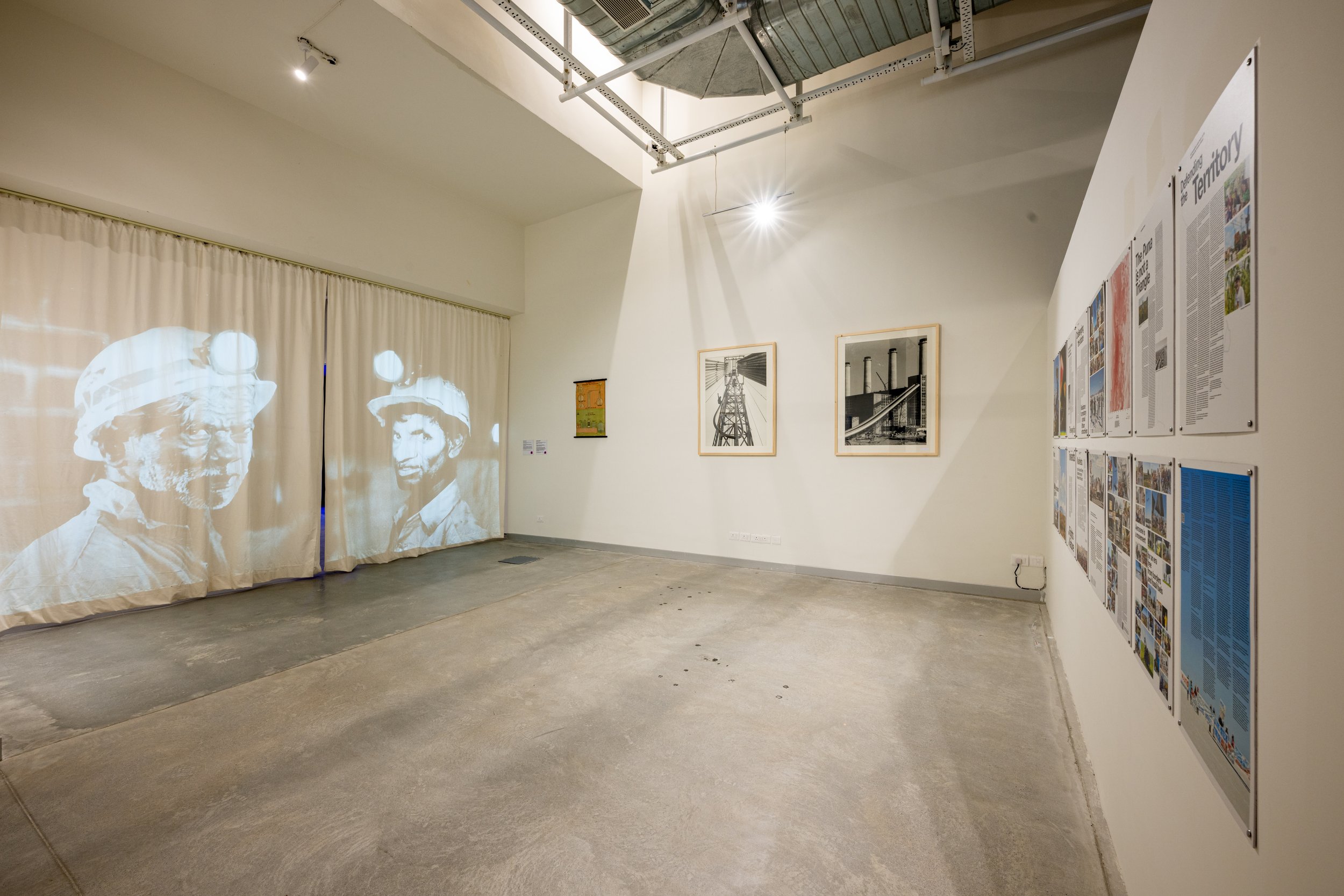Of Machines and Men
With snapshots of colossal industries and toiling workers, these photographs highlight petroleum, coke, and coal gas which powered India's industrialisation.
In Mitter Bedi's work, industrial plants loom over us, foreshadowing the consequences of unchecked energy use. T.S. Sathyan, on the other hand, focuses his lens on two mineworkers, who become emblematic of the human labour it takes to power our industries. The narratives of industry and labour converge, portraying the elements that have forged India's industrial landscape.
Courtesy of the Museum of Art and Photography (MAP), Bengaluru
Medium: Offset print on fabric lining with wooden scroll support, Projection, Silver gelatin prints
Year:
Team
Mitter Bedi
Photographer
An Indian photographer best known for his industrial photography, Mitter Bedi was commissioned by several public and private enterprises, and extensively photographed projects across industries such as steel, oil, mining, hospitality, sugar while also photographing for the film and fashion industry, along with advertising. His stark images in black and white record a significant period of Nehruvian India, and demonstrate an expansion of the genre of industrial photography, wherein images were not just functional and representational, but also artistic. His photographs reveal a close study and relationship between his subject and its form: whether through its shape, design, or geometry.
T.S. Satyan
Photographer
Tambrahalli Subramanya Satyanarayana Iyer, better known as T.S. Satyan, stands among India’s earliest career photojournalists. Renowned for his black and white photography, he captured iconic personalities, pivotal moments in South Asian history, and the everyday life of twentieth-century India. Beyond aesthetics, Satyan used his lens to advocate for child welfare, education, and medical advancements. He believed fervently in the camera's role as an unbiased chronicler of the times, a principle he steadfastly upheld throughout his career. Satyan's work not only documents the visual history of India but also reflects his commitment to social issues, making him a significant figure in the evolution of Indian photojournalism.





